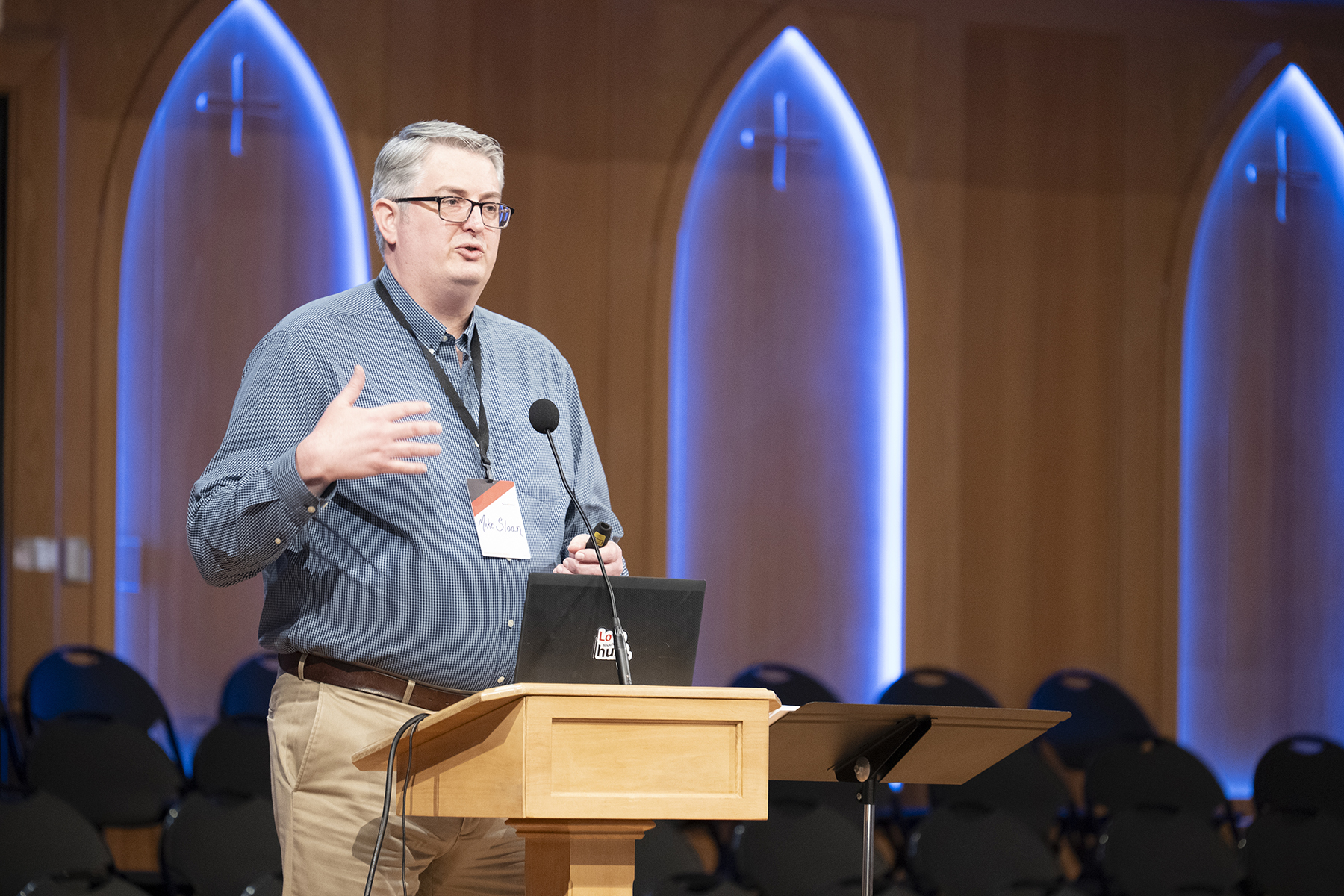
“Faith communities can be a powerful part of the solution [to abuse issues]," asserted Mike Sloan, director of safeguarding at GRACE (Godly Response to Abuse in the Christian Environment) during the NAD's 2023 enditnow Summit on Abuse. Photo: Dan Weber
Karen did not fit the stereotype of an abuse survivor. She was raised in a loving Seventh-day Adventist home with no history of abuse on either side. When she met her husband at an Adventist university, she never imagined she would become one of the 10 million Americans affected by domestic violence each year. The mistreatment began with excessive criticism and intensified after the birth of their first child, a girl with Down syndrome, whom he pressured her into putting up for adoption. As their family expanded to include two boys, he subjected her to such horrific emotional, physical, and sexual abuse that she wanted to take her own life.
Themed “Safeguarding Peace,” the North American Division’s (NAD) enditnow Summit on Abuse, held from November 12-13, 2023, at Andrews University, featured Karen’s video testimony and follow-up discussions; thought-provoking devotionals; and presentations from advocates, church leaders, and educators. It ended with hands-on training on responding appropriately to abuse disclosures and creating a resource list for abuse survivors.
More than 100 church leaders, educators, seminary students, professional advocates, and volunteers across North America and Europe registered for the event, indicating their commitment to combatting abuse. The two-day initiative concluded with an enditnow certification ceremony for attendees who demonstrated the ability to support abuse survivors through a skills assessment.
“The Seventh-day Adventist Church in North America cares deeply about the topic, and we’re taking a firm stand against it,” asserted Erica Jones Smith, summit organizer and NAD Women’s Ministries assistant director. She added, “We believe one of the most impactful things we can do is train local people to understand this does happen in faith communities and to know how to appropriately respond when it does.”
On day one, Ken Denslow, Lake Union Conference president, offered a unique take on the parable of the good samaritan. We are all the battered man, representing “those who have been stripped of their dignity and sense of self-worth because of the mindless, careless actions of others.” Jesus is the Good Samaritan, “the only One who can save.” And we are called to be innkeepers, helping heal the wounds of the afflicted. “May Seventh-day Adventist churches truly be havens of refuge, where innkeepers are busy meeting the needs of others,” he concluded.
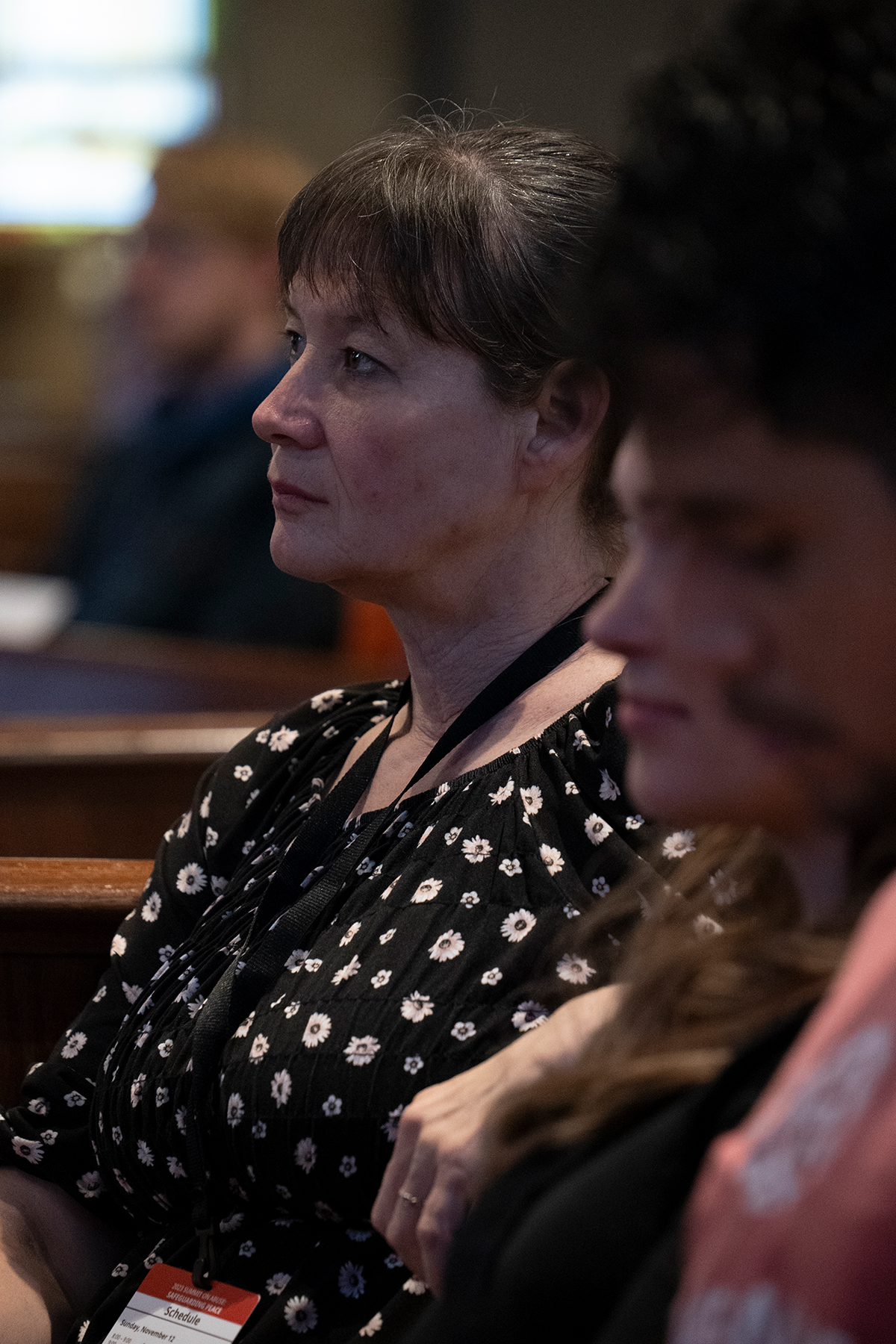
During the NAD's 2023 enditnow Summit on Abuse, Nicole Parker, an adjunct professor at Southern Adventist University, abuse advocate, and therapist was available for support it participants were triggered by any of the content. Photo: Dan Weber
Also on opening day, participants learned that a counselor, Nicole Parker, was available for support throughout the training. Parker, who teaches a course on biblical counseling and conflict resolution at Southern Adventist University and serves as an abuse advocate and therapist, emphasized the church’s need to tackle abuse issues. “Many people think advocacy against abuse is a side issue that distracts us from taking the gospel to the world. But I find it’s a central issue. Jesus said that how we treat the powerless is an index of where our hearts are.”
Training topics at the summit included abuse awareness, prevention, and response; child abuse prevention and response; abuse statistics in and outside of the church; first response proficiency; NAD and other resources; and next steps. The diverse team of presenters included Mike Sloan, director of safeguarding at GRACE (Godly Response to Abuse in the Christian Environment); René Drumm, senior research professor of sociology at Andrews University; Tricia Lewis, clinical assistant professor of health sciences at Sacred Heart University; Tracey Ray, executive director of Safe Haven of Pender, a shelter and resource center for domestic abuse survivors; Douglas Tilstra, retired vice president for student life at Walla Walla University; and Ruben Muriente, program manager, Office of Community, Safety, and Gun Violence for the City of Chattanooga, Tennessee.
Drumm, Lewis, and Ray also helped develop the Safeguarding Peace manual with information on abuse, resources, and appropriate responses to disclosure. It was introduced at the summit and will be available shortly at adventsource.org.
Demystifying the Different Types of Abuse
In the opening presentation, Ray gave an overview of intimate partner violence (IPV), i.e., emotional, physical, spiritual, and sexual abuse, definitions, statistics, and case studies. Ray introduced terms such as victim-survivor, acknowledging the strength they show in overcoming abuse, and a person acting abusively rather than abuser to signify that the person is still a child of God. Among the most shocking statistics she shared was that in the U.S., nearly three women are killed every day by an intimate partner, a crisis we cannot ignore.
“We don’t want individuals to be invisible in churches, and we don’t just want to have a heart [for helping abuse victim-survivors]. We want to put action and skill behind it,” she said, expressing the impetus for the summit.
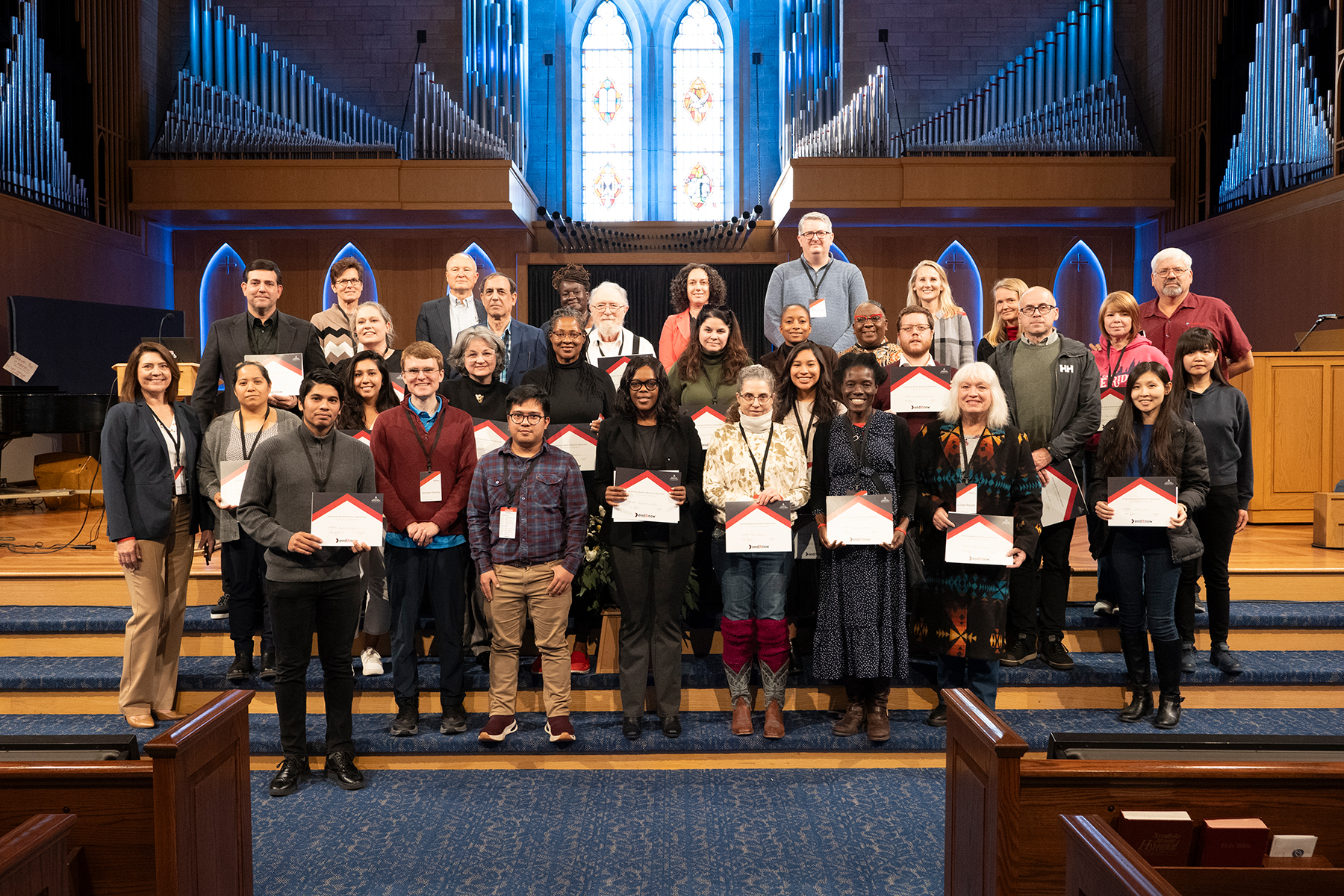
Attendees came from across North America and Europe to the NAD's 2023 enditnow Summit on Abuse to gain knowledge and resources to help eradicate abuse in their circles. Pictured: attendees, presenters, and NAD leaders DeeAnn Bragaw (front, far left), Women's Ministries director, and Erica Jones Smith, third from the right, Women's Ministries assistant director, whose department hosted the initiative. Photo: Dan Weber
Church Too: Abuse Issues as Prevalent in Congregations
Lewis spoke on the prevalence of abuse, sharing that in the U.S., one-third of women and men report emotional or psychological IPV. In Canada, 44 percent of women and 36 percent of men experience IPV, emotional violence being most prevalent at 40 percent for both, and physical IPV coming in second, at 23 percent of women and 17 percent of men.
The most eye-opening revelation was the prevalence of IPV in the Seventh-day Adventist Church in North America, based on surveys submitted by 1,400 members. More than 60 percent of the sample had experienced some form of emotional or psychological abuse. Also, 30 percent of women and 20 percent of men reported physical violence.
Lewis stated, “The numbers indicate that intimate partner violence is just as common in the church as it is outside of the church in North America. This may be shocking for many who think the denomination or church is a sacred place for men and women. Unfortunately, we’re not doing any better, as far as preventing abuse, [than] the rest of the world.”
Drumm uncovered results from an in-depth follow-up study of 42 Adventist abuse victim-survivors, revealing that 90 percent of the abusers were Seventh-day Adventist church members. Several held church offices and/or denominational positions, such as pastors, elders, deacons, professors, hospital administrators, and conference officers. The underlying message, Drumm said, was: “[An abuser] can be anyone.”
In a session on barriers preventing victim-survivors from leaving, Muriente noted that, for many, “The fear of leaving is greater than the fear of staying.” Reasons for staying include fear of greater physical harm, losing custody of their children, not being believed, feelings of guilt and shame, or hope for positive change. Lewis added that women often stay, even in cases of severe abuse, because of financial dependence on that person. Attendees also learned that, on average, victim-survivors leave six to eight times before leaving permanently.
Other issues, Muriente underscored, are endemic in churches. First is the abuser’s reputation. “Those wolves in sheep’s clothing are much more common than you think,” he warned. In Karen’s case, her husband was a deacon and friend of the pastor. He added, “Sometimes our religious expectations need to be checked when it comes to abuse.” The misconception that abuse is less prevalent within the church and the lack of intentionality around these issues can inadvertently perpetuate a culture of abuse.
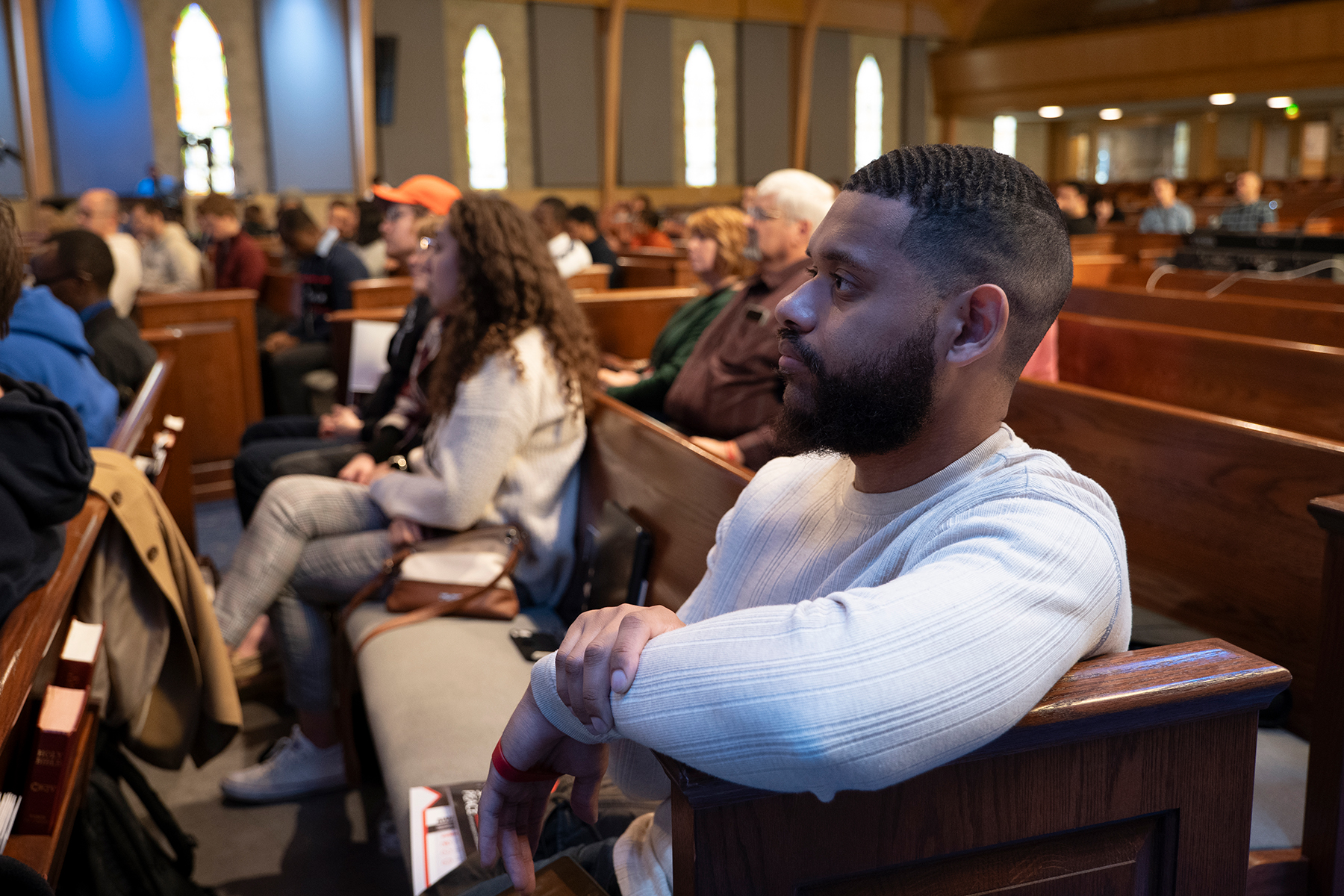
The NAD's 2023 enditnow Summit on Abuse kept attendees' attention with inspiring sessions on abuse statistics, prevention, and response, as well as hands-on training on how to respond appropriately to abuse disclosures. Photo: Dan Weber
Prevention and Response
Subsequently, Lewis shared different tiers of prevention. Tertiary prevention mitigates the long-term consequences of violence for victim-survivors seeking healing. Examples in the church include counseling (referral as needed), support groups, and financial and in-kind support for victim-survivors and families. Secondary prevention encompasses early detection and immediate intervention. Examples include making IPV resources available and having an enditnow advocate receive confidential disclosures. Finally, primary prevention involves system-wide efforts to prevent new cases of a condition or victimization. Examples include sermons condemning abuse, enditnow emphasis day, and seminars on healthy relationships.
Sloan covered child abuse prevention and response on both days. He cited common instances of child abuse as physical discipline leading to physical injuries and emotional neglect when a child does not feel safe or loved. He noted that more than 90 percent of victims know their abuser, and most abuse occurs in the home by a biological or non-biological parent or partner. Finally, many child abuse victim-survivors never disclose.
He asserted that while religious affiliation does not automatically reduce child abuse issues, “Faith communities can be a powerful part of the solution.” He called for the education of kids on protecting themselves and the education of congregations on types of child abuse, red flags, boundaries, and resources. “The safest community is an educated community,” he said.
Sharing Hope and Healing
Karen’s story was interspersed throughout the summit and offered hope for victim-survivors and advocates alike. She was about to drive into a sinkhole when the song “Choose Life that You Might Live” began playing on the radio, growing increasingly louder. She cried out to God for help that day, which came after a friend observed her rubbing her wrist and urged her to seek counseling. Shortly afterward, Karen saw a flyer for a women’s abuse shelter at church. She asked her husband to let her attend depression treatment, and miraculously, he agreed. The peace she experienced there, and much prayer, gave her the strength to leave him.
Today, Karen and her adult sons are thriving; her sons are married and pursuing purposeful careers. She even reconnected with the daughter she gave away for adoption. Today, she openly shares her story. “Why did God allow this to happen? I have no clue. But I do know God is good. I give God the glory for bringing me through it. I want to tell other women that there is hope.”
Becoming an enditnow Advocate
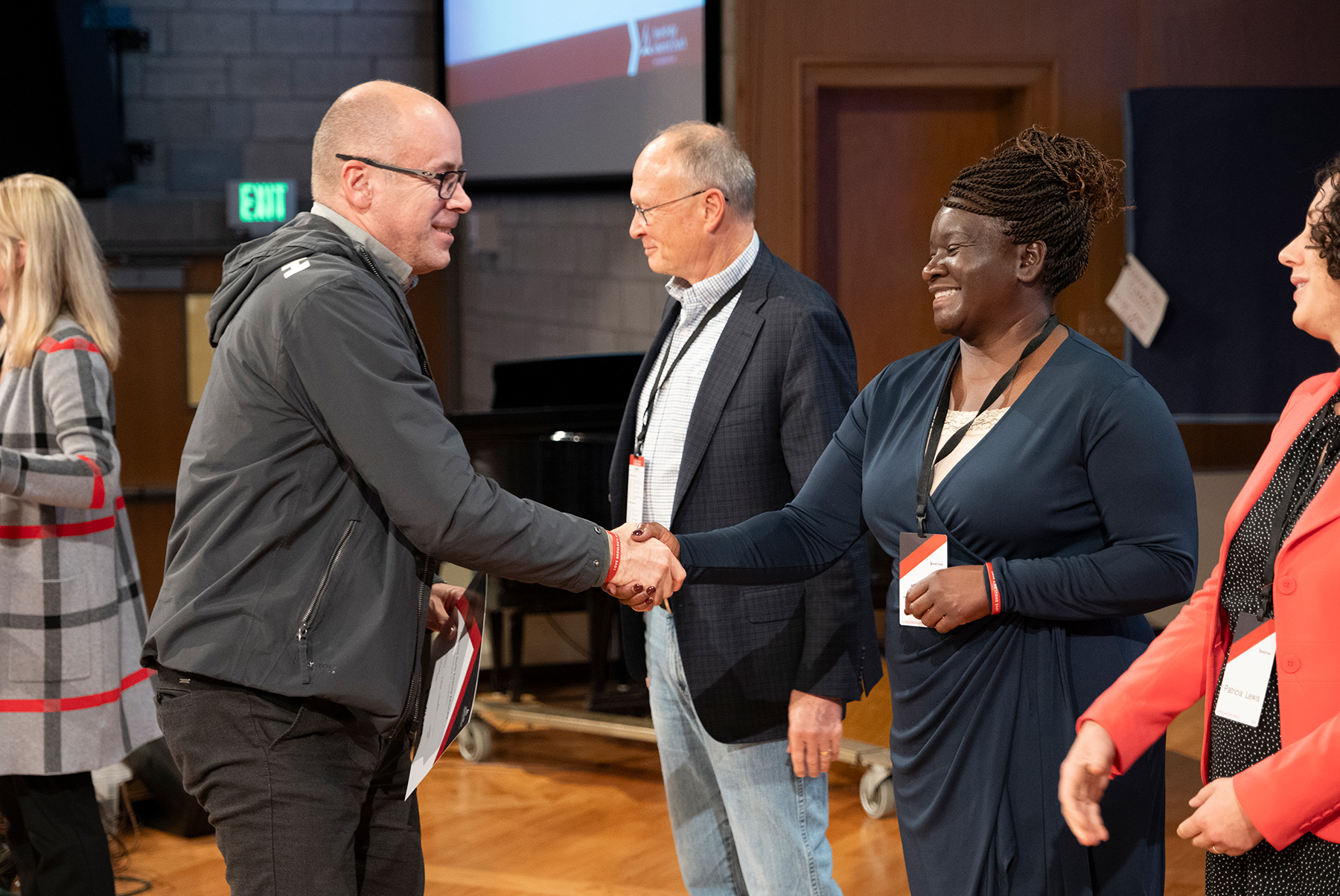
On day two of the NAD's 2023 enditnow Summit on Abuse, attendees who had passed a skills assessment were certified as enditnow advocates. Pictured, l to r: Erica Jones Smith, organizer and NAD Women's Ministries assistant director; Vidar Hovden, ministerial secretary, Sabbath School and Bible correspondence school leader (newly minted enditnow advocate); Doug Tilstra, retired vice president for student life at Walla Walla University; Tracey Ray, executive director of Safe Haven of Pender; and Tricia Lewis, clinical assistant professor of health sciences at Sacred Heart University. Photo: Dan Weber
Day two offered attendees ample opportunities to practice their advocacy skills. First, they role-played being a victim and an advocate, using different scenarios and scripts for guidance. They learned three keys to receiving a disclosure—believe the individual is telling the truth, grieve or acknowledge the individual’s pain, and relieve the situation by offering resources and support. They also began building resource guides for victim-survivors in region-based groups. Finally, they learned to conduct a safety check with victims based on a scale of one to three – 1) I feel safe but cautious; to 3) I am afraid for my life. In all instances, they would offer to connect the person to a domestic violence team or resources and for a response of two or three to emergency shelter services and local law enforcement.
“We want to ensure that people are really equipped to return to their local communities and address issues,” explained Smith.
Those who attended both days, almost half of the registrants, were evaluated and received a certificate indicating they were now an enditnow advocate. Their advocacy responsibilities included but were not limited to:
- volunteering as an anti-abuse advocate to be the primary contact to receive and disseminate abuse prevention information;
- connecting with local or state domestic violence providers for training;
- following up with enditnow organizers;
- and helping ensure their local church holds an enditnow emphasis day in August.
Beth Grissom, Women’s Ministries and Prayer Ministries director of the Carolina Conference, said, “I am very thankful they brought in professionals. I’m incredibly proud of the North American Division for the quality of the information presented.”
Paula Ferreira-Lopez, Women’s Ministries director from the Ontario Conference, concurred. “This is an important and valuable part of what we should do in ministry. [The certificate] is not just a piece of paper. We’re creating a movement.”
Additional Information
Find more free resources for creating safe churches at https://www.enditnownorthamerica.org/ and on the AdventSource enditnow page.
Sessions from the 2023 enditnow Summit will soon be available on the enditnow page of the Adventist Learning Community website as part of an online course.
The Seventh-day Adventist Church in North America also offers a silent whistle program that allows users to send anonymous reports of abuse —https://www.enditnownorthamerica.org/silent-whistle.
